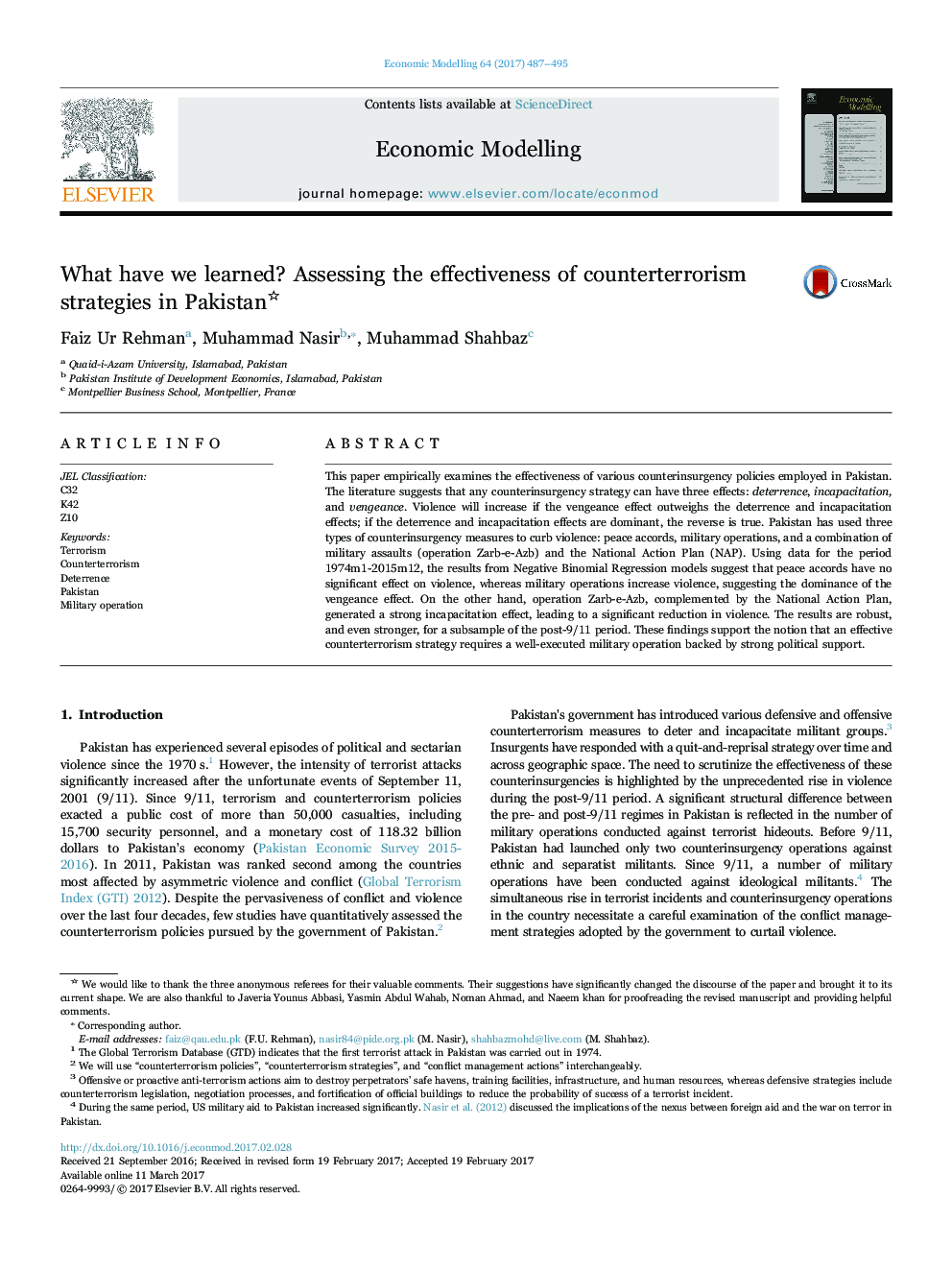| Article ID | Journal | Published Year | Pages | File Type |
|---|---|---|---|---|
| 5053167 | Economic Modelling | 2017 | 9 Pages |
Abstract
This paper empirically examines the effectiveness of various counterinsurgency policies employed in Pakistan. The literature suggests that any counterinsurgency strategy can have three effects: deterrence, incapacitation, and vengeance. Violence will increase if the vengeance effect outweighs the deterrence and incapacitation effects; if the deterrence and incapacitation effects are dominant, the reverse is true. Pakistan has used three types of counterinsurgency measures to curb violence: peace accords, military operations, and a combination of military assaults (operation Zarb-e-Azb) and the National Action Plan (NAP). Using data for the period 1974m1-2015m12, the results from Negative Binomial Regression models suggest that peace accords have no significant effect on violence, whereas military operations increase violence, suggesting the dominance of the vengeance effect. On the other hand, operation Zarb-e-Azb, complemented by the National Action Plan, generated a strong incapacitation effect, leading to a significant reduction in violence. The results are robust, and even stronger, for a subsample of the post-9/11 period. These findings support the notion that an effective counterterrorism strategy requires a well-executed military operation backed by strong political support.
Related Topics
Social Sciences and Humanities
Economics, Econometrics and Finance
Economics and Econometrics
Authors
Faiz Ur Rehman, Muhammad Nasir, Muhammad Shahbaz,
